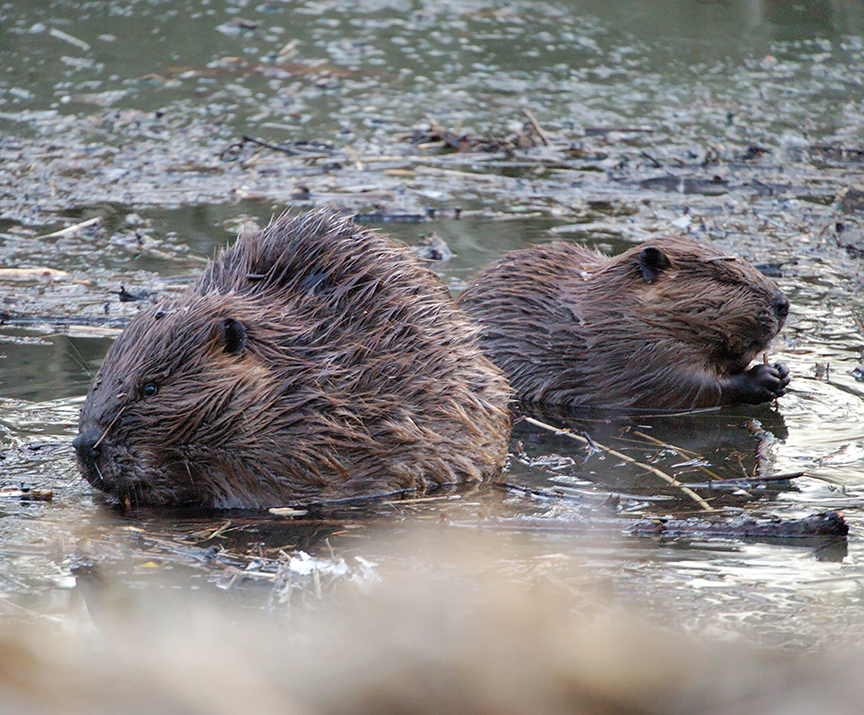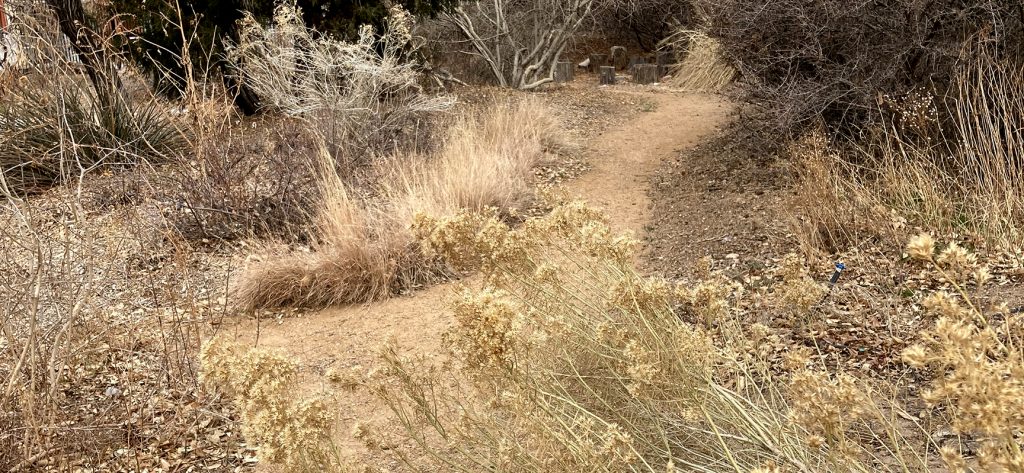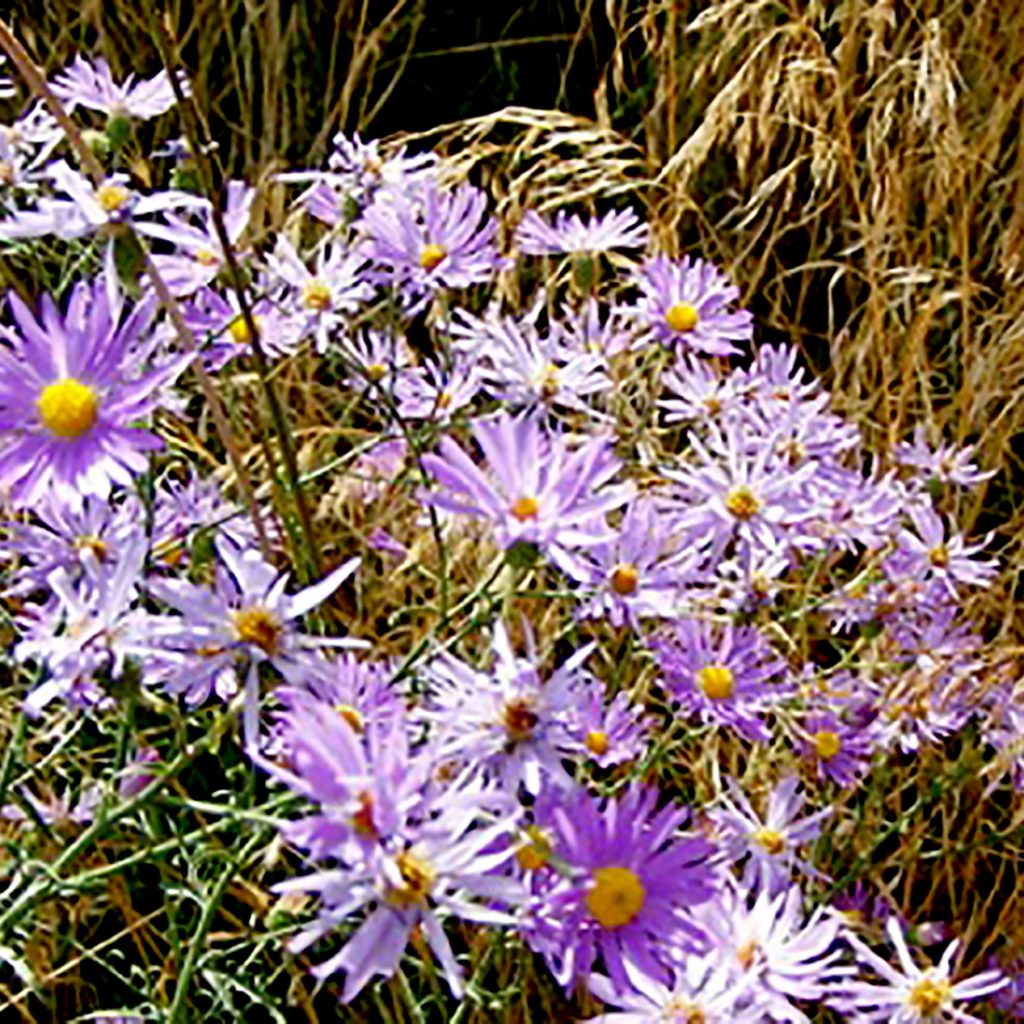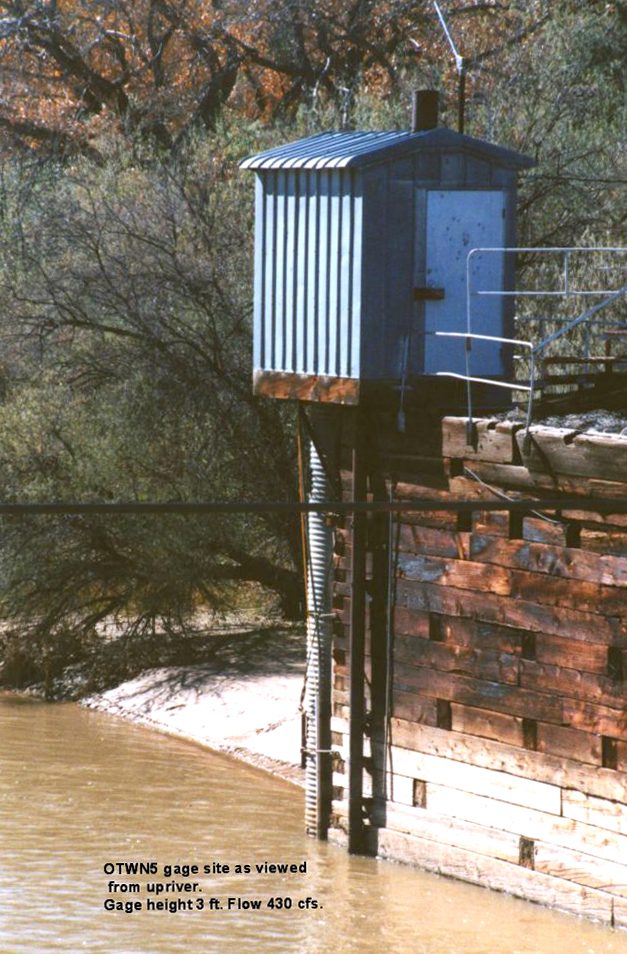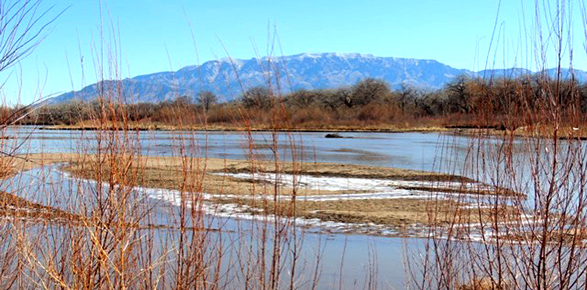by Katherine Chilton
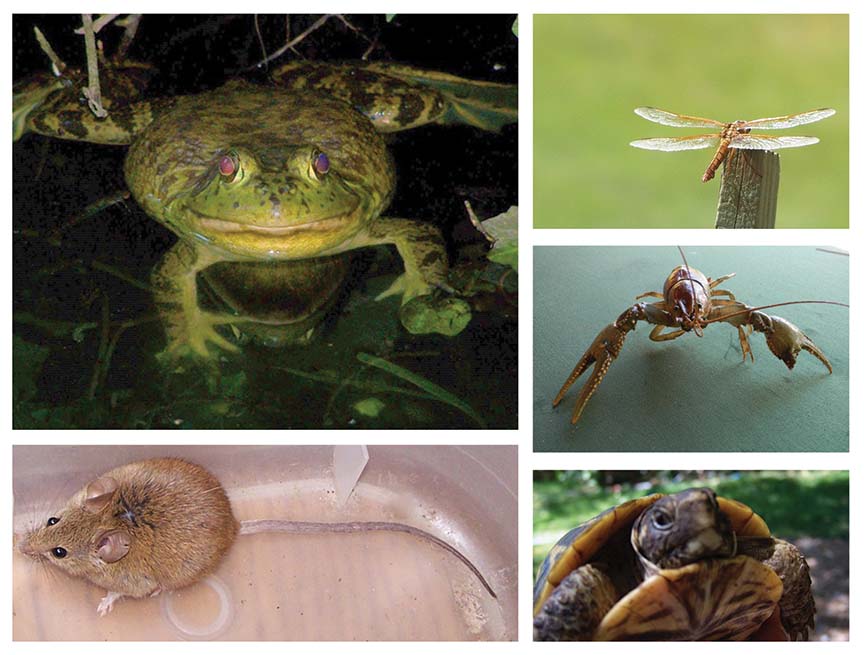
The cottontail lives in our front yard under the spirea bushes where it has plenty of food, some water that collects on the top of our well housing, and significant protection. It ventures out most mornings, perhaps to vary its diet and look for the occasional carrot I put out for it.
A family of raccoons seems to be living in the street drain next to our sidewalk. I seldom see them, but they leave footprints on the steel bin in which I store birdseed. I painted a portrait of one and placed it on the tree that shades their cavernous home.
In the 48 years that we have lived here, I have seen ground squirrels only in the past 6 years. They seem to have taken over the place in spite of our dog that romps in the backyard and my efforts to block their ubiquitous holes. I had read that they do not like coffee grounds, so I regularly poured our used grounds down their holes. This caffeine boost may be why they use our trees, deck, windowsills, and fences as an active playground.
Audacious coyotes trot down our street gripping a prize neighborhood chicken or cottontail in their mouths. They have ventured onto our front porch. Fences seem to be no obstacles for them. We are gifted with multi-voice concerts in the evenings and early mornings. Most of the ones we see are robust. but once in a while we see a thin, mangy one. We hope that the plump ones are consuming mice.
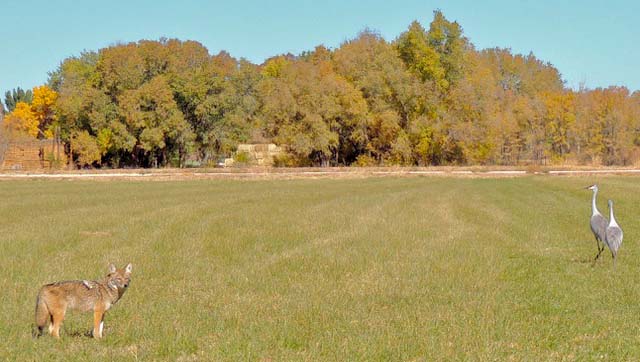
We do have field mice that somehow squeeze their way into the house during the first cold night of fall. Our catching traps allow us to release them under the tree the Cooper’s hawk favors – giving both creatures a chance. There are deer mice in our shed and we are wary of them and their relationship to hantavirus – yet another reason to have a supply of masks.
We are learning much from the ABQ Backyard Refuge Program, especially about the care and planting of beneficial native plants.

